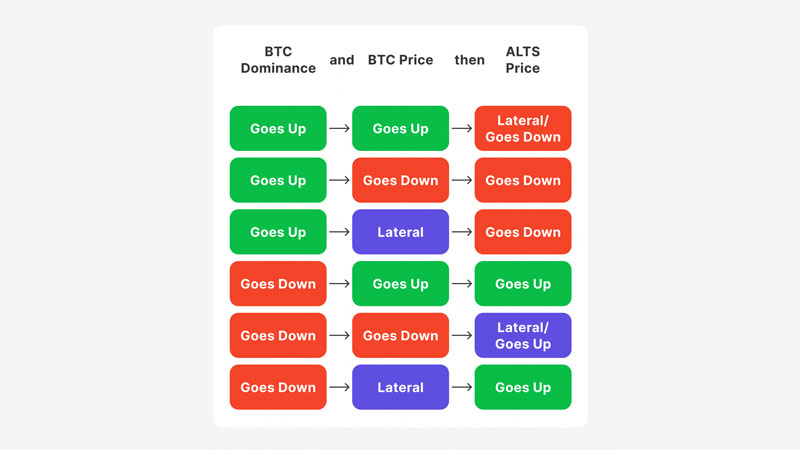What Is the Bitcoin Dominance Index and Why It Matters
The Bitcoin Dominance Index is a key metric in the cryptocurrency world that measures Bitcoin's market share relative to the total market capitalization of all cryptocurrencies. Expressed as a percentage, it’s calculated by dividing Bitcoin’s market cap by the combined market cap of all digital currencies, including Bitcoin itself. For example, if Bitcoin’s market cap is $1 trillion and the total crypto market cap is $2.5 trillion, the Bitcoin Dominance Index would be 40%. This figure provides insight into Bitcoin’s influence over the broader crypto market and is widely tracked by investors and traders.
Bitcoin, as the first cryptocurrency, once held nearly 100% of the market when it launched in 2009. However, with the rise of altcoins—alternative cryptocurrencies like Ethereum, Ripple, and thousands of others—its dominance has fluctuated over time. Historical data shows that Bitcoin’s dominance peaked at 95% in 2013 but dropped significantly during altcoin booms, such as the 2017 ICO craze when it fell to around 37%, according to Statista. As of early 2025, posts on X indicate Bitcoin dominance has climbed back to levels like 61.2%, a high not seen since March 2021, reflecting its renewed strength.
Why does this index matter? It acts as a barometer of market sentiment. A rising Bitcoin dominance often signals that investors are favoring Bitcoin over altcoins, possibly due to its perceived stability during uncertain times. Conversely, a declining index suggests capital is flowing into altcoins, which typically happens during bullish market phases or “altcoin seasons.” Traders use this metric to gauge risk appetite: high dominance might mean a cautious market, while low dominance could indicate speculative fervor.
Several factors influence Bitcoin dominance. Market trends, such as Bitcoin price surges or altcoin rallies, directly impact the index. For instance, when Bitcoin hit a new all-time high above $93,000 in November 2024, its dominance soared, as reported by Investopedia. Regulatory news, technological upgrades like Ethereum’s smart contracts, and the growing popularity of stablecoins like Tether (with a market cap of $120 billion) also play roles in shifting the balance. Stablecoins, in particular, have diluted Bitcoin’s share by offering a less volatile alternative during bear markets.
While useful, the Bitcoin Dominance Index isn’t flawless. Critics argue it oversimplifies the market by relying solely on market cap, ignoring factors like trading volume or coin inflation rates. For example, Cointelegraph notes that stablecoin growth can skew the index, as their rise doesn’t necessarily boost altcoin performance. Some traders prefer the “Real Bitcoin Dominance Index,” which only includes Proof of Work coins to focus on decentralized assets, excluding stablecoins and ICO-driven tokens.
For investors, tracking Bitcoin dominance can inform portfolio decisions. A rising index might prompt a shift toward Bitcoin, while a falling one could signal altcoin opportunities. Platforms like CoinMarketCap and TradingView offer real-time dominance charts, making it accessible for analysis. As the crypto market evolves, understanding this index remains crucial for navigating its dynamics.
Sources: Statista (historical dominance data), Investopedia (November 2024 price surge), Cointelegraph (stablecoin impact), posts on X (2025 dominance levels).


